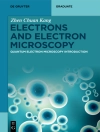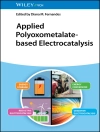Written by established experts in the field, this book features in-depth discussions of proven scientific principles, current trends, and applications of nuclear chemistry to the sciences and engineering.
* Provides up-to-date coverage of the latest research and examines the theoretical and practical aspects of nuclear and radiochemistry
* Presents the basic physical principles of nuclear and radiochemistry in a succinct fashion, requiring no basic knowledge of quantum mechanics
* Adds discussion of math tools and simulations to demonstrate various phenomena, new chapters on Nuclear Medicine, Nuclear Forensics and Particle Physics, and updates to all other chapters
* Includes additional in-chapter sample problems with solutions to help students
* Reviews of 1st edition: ‘… an authoritative, comprehensive but succinct, state-of-the-art textbook ….’ (The Chemical Educator) and ‘…an excellent resource for libraries and laboratories supporting programs requiring familiarity with nuclear processes …’ (CHOICE)
A propos de l’auteur
WALTER D. LOVELAND, Ph D, is a professor of chemistry at Oregon State University, USA.
DAVID J. MORRISSEY, Ph D, is a professor of chemistry and associate director of the National Superconducting Cyclotron Laboratory at Michigan State University, USA.
GLENN T. SEABORG, Ph D (deceased), was a professor of chemistry at the University of California, Berkeley, and cofounder and chairman of the Lawrence Hall of Science, USA. He is credited with discovering 10 new elements, including plutonium and one that now bears his name, seaborgium. In 1951, Dr. Seaborg and his colleague, Edwin Mc Millan, were awarded the Nobel Prize in Chemistry for research into transuranium elements.












